up to 40,000 killed 40,000-50,000 killed Result Decisive Timurid victory | Date 20 July 1402 | |
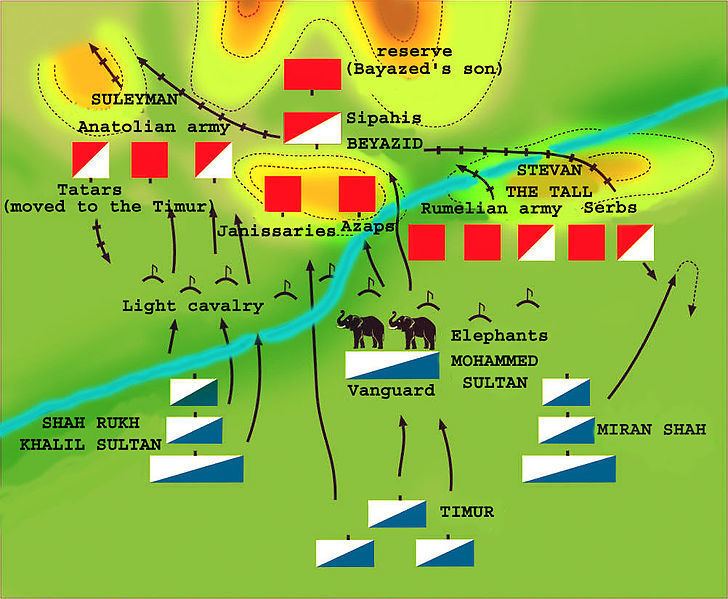 | ||
Unknown Disputed2,000 - 10,000 Serbs21,000 Tatars Combatants Similar Battle of Nicopolis, Battle of Kosovo, Battle of Sırp Sındığı, Battle of Varna, Battle of Bapheus | ||
Battle of ankara video
The Battle of Ankara or Battle of Angora, fought on 20 July 1402, took place at the field of Çubuk (near Ankara) between the forces of the Ottoman Sultan Bayezid I and Timur, ruler of the Timurid Empire. The battle was a major victory for Timur, and it led to a period of crisis for the Ottoman Empire (the Ottoman Interregnum). However, the Timurid Empire went into terminal decline following Timur's death just three years after the battle, while the Ottoman Empire made a full recovery, and continued to increase in power for another two to three centuries.
Contents
- Battle of ankara video
- Ankara sava battle of ankara 1 3
- Background
- Forces
- Battle positioning
- Battle
- Aftermath
- References
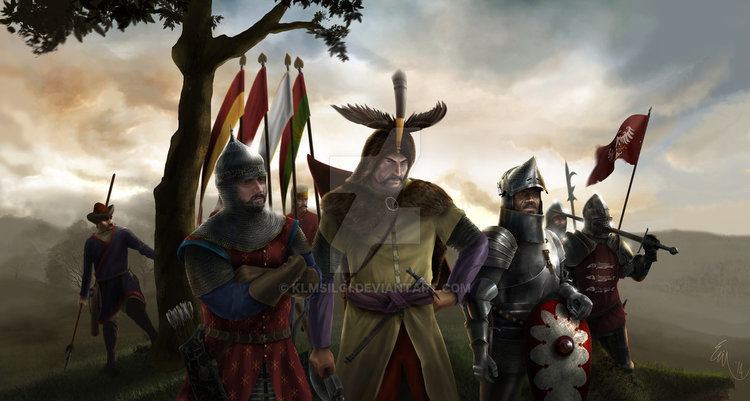
Ankara sava battle of ankara 1 3
Background
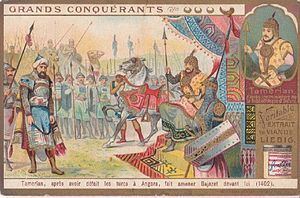
Timur was one of the most powerful Central Asian rulers since Genghis Khan. Through long and relentless fighting, he sought to rebuild the Mongol Empire of his predecessors.
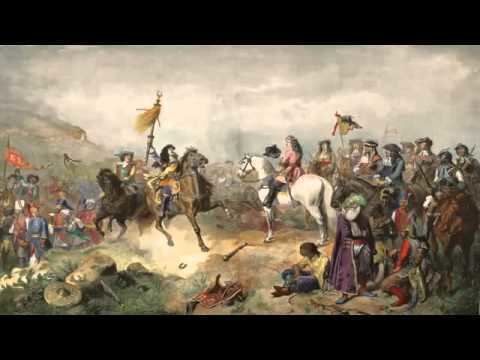
Timur had conquered Georgia and Azerbaijan in 1390 and Syria in 1399 after defeating the Mamluks, expanding his empire to the borders of the Ottoman Empire. The two powers soon came into direct conflict. Bayezid demanded tribute from one of the Anatolian Beyliks who had pledged loyalty to Timur and threatened to invade. Timur interpreted this action as an insult to himself and in 1400 sacked the Ottoman city of Sebaste (modern Sivas). In 1402, the Ottomans campaigned in Europe, trying to conquer Hungary. Timur found it as a proper moment to attack and destroy the Ottoman Empire. Bayezid was stung into furious action and when Timur invaded Anatolia from the east, hurried back from Europe in order to confront the fast-moving Timur somewhere in the west of Turkey. Timur, whose whole army was mounted, took a u-turn moving fast through Anatolia, slaughtering Ottoman conscripts, taking away horses, destroying Ottoman cities and towns in his path. The conflict, overall, was the culmination of years of insulting letters exchanged between Timur and Bayezid.
Forces
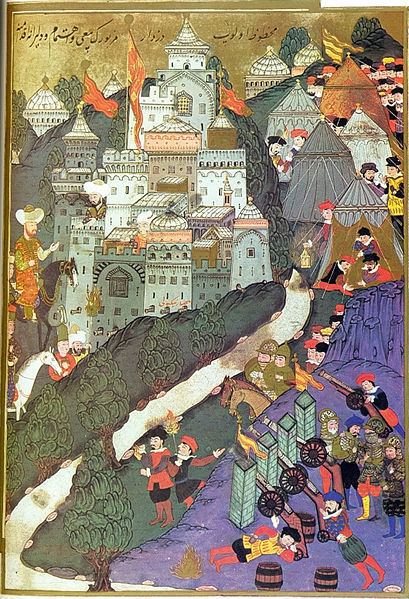
The exact size of the opposing armies is not known. When Timur invaded Asia Minor, his army of horsemen with no infantry allowed him to move fast through the Ottoman Empire, destroying the Empire's defense piece by piece. Later, before the main battle and during the battle, a number of Bayezid's allies and vassals joined Timur. In Turkey Old and New: historical, geographical and statistical (1880), Sutherland Menzies states that both armies amounted to nearly one million men. Peter Fredet claims that Timur and Bayezid's armies consisted of 800,000 and 400,000 men, respectively. Robert Henlopen Labberton argues that Timur's army had 600,000 men, while Bayezid's army was only 120,000 strong.

The first-hand observer Johann Schiltberger, who had been taken captive by Bayezid during the Battle of Nicopolis and remained with him until the latter's own captivity whereupon he was transferred to Timur, gives the figures at "sixteen hundred thousand" for Timur and "fourteen hundred thousand" under Bayezid.

In The History of the Decline and Fall of the Roman Empire, historian Edward Gibbon explained in detail the discrepancies over the strengths of the forces:
This number of 800,000 was extracted by Arabshah, or rather by Ebn Schounah, ex rationario Timuri, on the faith of a Carizmian officer (tom. i. c. 68, p. 617); and it is remarkable enough that a Greek historian (Phranza, l. i. c. 29) adds no more than 20,000 men. Poggius reckons 1,000,000; another Latin contemporary (Chron. Tarvisianum, apud Muratori, tom. xix. p. 800) 1,100,000; and the enormous sum of 1,600,000 is attested by a German soldier who was present at the battle of Angora (Leunclav. ad Chalcondyl. l. iii. p. 82). Timour, in his Institutions, has not deigned to calculate his troops, his subjects, or his revenues. ... Timour himself fixes at 400,000 men the Ottoman army (Institutions, p. 153), which is reduced to 150,000 by Phranza (l. i. c. 29), and swelled by the German soldier to 1,400,000. It is evident that the Moguls were the more numerous. [The forces of Bayezid are put at 90,000 by Sad ad-Din (tr. Bratutti, 214). Of course the number given by Timur cannot be accepted.]
In Armies of the Ottoman Turks, 1300–1774, David Nicolle remarked that "[t]he sizes of the two armies are reliably estimated at 140,000 on Timur's side and no more than 85,000 under Sultan Bayezid I". Gjon Kastrioti (Skanderbeg's father) together with other Ottoman vassals from Albania (Koja Zaharia, Dhimiter Jonima and probably Tanush Dukagjini) personally led their retainers participating in this battle on the Ottoman side.
Battle positioning
Bayezid reluctantly withdrew his forces from the blockade of Constantinople and marched them through the midsummer heat. When they arrived, they were tired and thirsty, but were allowed no time to rest or recuperate. Bayezid was advised by his generals to take up defensive positions and, when Timur's forces pushed back the Ottomans, to withdraw into the mountains and force Timur to break ranks and attempt to hunt the Ottomans in their own terrain during the midsummer heat. Bayezid instead chose to take an offensive stance and marched eastward. Advancing Ottoman scouts found no traces of the Timurids, who secretly marched southwest, rested, and were situated to the rear of the Ottomans. The Timurids encamped in the same locations that the Ottomans had previously occupied, making use of abandoned tents and water sources.
Battle
The battle began with a large-scale attack from the Ottomans, countered by swarms of arrows from the Timurid horse archers. Several thousands were killed and many surrendered to Timur. Serbian Prince Stefan Lazarević and his knights together with Wallachian forces successfully fought off the Timurid assaults and cut through the Mongol ranks three times. Each time Stefan advised Bayezid to break out with him, Bayezid declined to do so. But the Serbians managed to save one of Bayezid's sons and the treasury from the Mongols and made their way to Constantinople. The Serbian troops wore heavy black plate armour which was very effective against the Timurid arrows. Timur admired the Serbian troops who according to him "fight like lions". During the battle the main water supply of both armies, Çubuk creek, was diverted to an off-stream reservoir near the town of Çubuk by Timur, which left the Ottoman army with no water. The final battle took place at Catal hill, dominating the Çubuk valley. The Ottoman army, both thirsty and tired, was defeated, though Bayezid managed to escape to the nearby mountains with a few hundred horsemen. However, Timur had the mountains surrounded and, heavily outnumbering Bayezid, soon captured him. He died in captivity three months later. Already heavily outnumbered, the Ottoman army was further weakened by the desertion of the Black Tatars and the Sipahis from the Anatolian beyliks, who left Bayezid's side and joined Timur's forces.
Aftermath
The Battle of Ankara proved to be a devastating event for the Ottoman Empire, leading to significant fragmentation and nearly causing its total downfall. The aftermath saw a civil conflict among the sons of Bayezid, perpetuating a state of civil war within the empire for an additional 11 years until 1413.
The battle is also significant in Ottoman history as being the only time a Sultan has been captured in person.
It has been claimed that over 50,000 Turks were killed within just a few hours.
